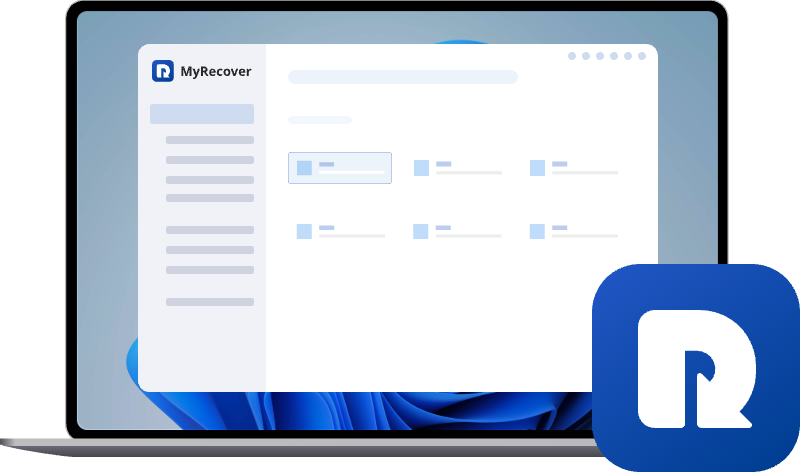How to Recover Data from SATA Hard Drive?
This article shows you how to recover data from a SATA hard drive under different conditions, including accidental file deletion, drive formatting, file system damage, and detection failures. You’ll discover what is the trusted SATA hard drive data recovery software to retrieve lost files from SATA hard disk, whether you are using 2.5-inch laptop drives to full-size desktop HDDs.
User Case
One of my 4TB WD SATA drives suddenly stopped showing up in Windows. This drive contains nearly a decade of personal videos, photos, and project files that I really want to recover. My Backblaze backup failed to save most of them, so cloud recovery isn’t an option. I’m looking for free or affordable ways to recover data from this SATA hard drive without sending it to an expensive recovery service.
A Brief Overview of SATA Hard Drive
A SATA hard drive (Serial Advanced Technology Attachment) is a storage device that uses the SATA interface to connect to a computer’s motherboard. It has largely replaced the older PATA (Parallel ATA) standard thanks to its faster data transfer speeds, slimmer cables, and better overall efficiency.
SATA drives come in two main form factors:
- 3.5-inch SATA HDDs – Commonly used in desktop computers, offering large storage capacity at an affordable cost.
- 2.5-inch SATA HDDs – Often found in laptops and portable storage devices, balancing size and capacity.
Top Data RecoverySoftware for SataHard Drive
Before choosing a recovery solutionto recover files from SATA hard drive, it’s important to understand why data loss might happen. Common causes include:
- Accidental deletion or formatting: Files removed by mistake or a drive formatted without backup.
- File system corruption: Caused by improper shutdowns, malware, or power outages.
- Physical issues: Bad sectors, cable faults, or mechanical wear over time.
- Drive not detecting: Due to outdated drivers, loose connections, or firmware errors.
- Virus or ransomware attacks: Malicious software encrypting or deleting files.
When your SATA drive becomes inaccessible or files disappear, a reliable data recovery tool can be your best chance to restore them before they’re overwritten. My prior recommendation is MyRecover, which is a professional yet user-friendly data recovery software designed for Windows users.

- Wide Recovery Support: Handles over 500+ data loss scenarios, including copy errors, file system damage, and virus attacks.
- Extensive File Type Coverage: Recovers documents, photos, videos, audio, emails, and more.
- Fast & Deep Scan Modes: Quickly finds recently lost files or deeply scans for long-lost data.
- Preview Before Recovery: Lets you check recoverable files before restoring.
- Broad Device Compatibility: Works with 2.5-inch and 3.5-inch SATA HDDs, SSDs, USB drives, SD cards, and more.
- Supports Multiple File Systems: Performs NTFS, FAT, exFAT, ReFS, and even Ext drive data recovery.
3 Steps to Recover Data from SATA Hard Drive
If your SATA hard drive files are missingin Windows, you can follow these simple steps to retrieve your filesby MyRecover:
Step 1: Select and Scan the SATA Drive
Launch MyRecover and locate your problematic SATA hard drive in the device list. Click "Scan" to start searching for lost or deleted files. MyRecover will run a "Quick Scan" for recently deleted files, or a "Deep Scan" to find more recoverable data.
Step 2: Browse Results and Choose Target Files
Once the scan is complete, browse through the results using the search bar or file type filters. You can preview files (such as photos, documents, and videos) to ensure they are intact before recovery. Select the files or folders you want to restore.
Step 3: Recover to a Safe Location
Click "Recover" and choose a secure storage location "different from the original SATA drive" to prevent data overwriting. Wait for the process to complete, and your files will be restored and ready to use.
Bonus Tip: Recover Data from SATA Hard Drive Which is Not Detecting
When a SATA hard drive is not detected by Windows, the recovery approach depends on the underlying cause. Generally, you can divide the scenarios into two cases:
1. Partition Lost or Accidentally Deleted
If the drive is visible in Disk Management but shows as "Unallocated" or the partition is missing, your data may still be intact. In this case, you can use the "Partition Lost Recovery" feature of MyRecover, which thoroughly scans your entire system for lost or deleted partitions along with their data, helping you restore them with ease.
To do this, simply launch MyRecover and navigate to the "Partition Lost Recovery" option under the "Advanced Recovery" section. The software will then scan for any lost SATA partitions. Once the scan is complete, select the detected lost partition and click "Scan" to view all recoverable files inside—then proceed with recovery as usual.
2. Other Issues Preventing Detection
If the SATA hard drive is not detected at all in Disk Management or File Explorer, you need to troubleshoot the hardware or system first before recovery:
✔️Reseat SATA cables or try a different port/cable.
✔️Use an external SATA-to-USB adapter to connect the drive to another PC.
✔️Update or reinstall drivers in Device Manager.
✔️Enable the drive in BIOS if it’s disabled.
Once the drive becomes detectable, you can run MyRecover to scan and recover files.
In the End
Experiencing data loss on your SATA hard drive can be stressful, especially when valuable files are at stake. Fortunately, with the right SATA hard drive data recovery software MyRecover, you have a strong chance of retrieving your missing datafrom SATA disk, or other types of hard drive, even restoring data from SSD drive. Whether your drive is recognized but inaccessible or completely undetected, following the methods shared here will help you recover your files efficiently and securely.


